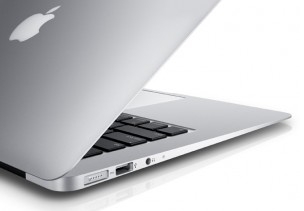
Despite Intel's claim that 40 percent of all laptops sold this year would be ultrabooks the most popular, mid-tange priced ultra-portable notebook today is Apple's MacBook Air.
Intel defines an ultrabook as an ultra-portable computer based on its processor architecture and running the Windows operating system.
In January Intel CEO Paul Otellini predicted that demand for ultrabooks would be huge and take as mnuch as 40 percent of the laptop market.
"I have not seen this level of excitement in our customer base since before Centrino," Otellini said in a January 19, 2012, earnings call with analysts.
However, uptake of thin and light portable computers during the first half of 2012 was disappointing, though new data from market intelligence firm ABI Research forecasts 20 million will ship worldwide in 2012.
Targeted at mid-range prices, the most popular ultra-portable laptop today is Apple's distinctly non-Windows MacBook Air. The Air does, of course, feature an Intel processor.
"Initial ultrabooks came to market several hundred dollars above consumer expectations," says ABI senior practice director Jeff Orr.
"High systems prices and waiting for the upcoming Windows 8 operating system are two leading reasons for lack of adoption."
Next-generation systems that bring prices down closer to audience requirements along with touch-screen models that provide versatile input methods are promised for 2013.
The ultra-portable segment has significant growth potential as consumer expectations are met. A healthy growth rate of 53 percent is predicted over the 2012 to 2017 forecast period.
At the low end of portable computing is the Netbook PC. Netbooks kept the portable computing market afloat during the 2009 global recession by offering a low-cost solution for families and students.
Now, the majority of PC OEMs have shifted focus away from the low-margin netbook toward more profitable media tablets.
The remaining netbook vendors are focused on educational deployments as a learning tool.
Both OLPC and Intel's Classmate PC partners continue to promote the use of technology within classroom settings all over the globe.
More than 15 million netbooks are expected to ship worldwide this year.
"Latin America has already taken advantage of the netbook opportunity, while the Eastern European markets are ramping deployments," adds Orr.





